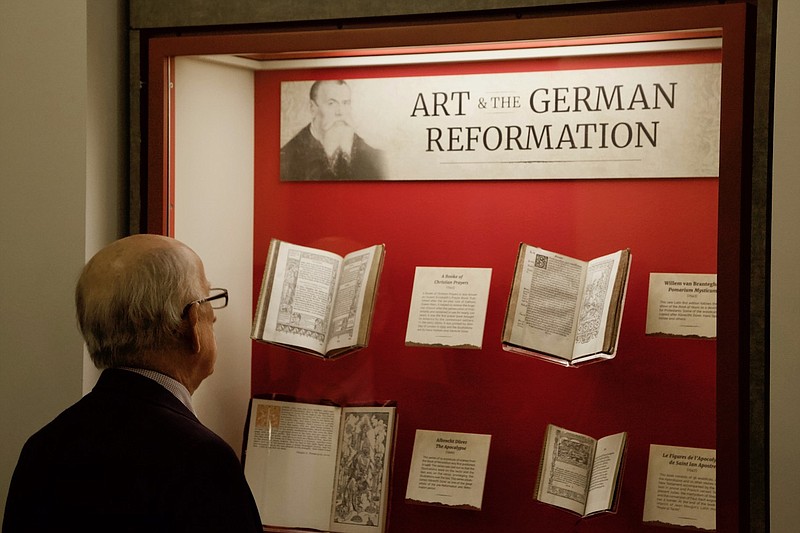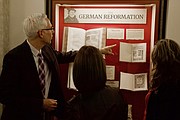A new exhibit that opened Wednesday at Southern Adventist University tracks the history of the Bible through the development of technology.
The "From Script to Scripture" exhibit features rare Bibles and Christian books from around the world. Visitors will learn how the history of writing and the printing press spread the Christian faith and allowed for major division, like the Protestant Reformation, said Michael Hasel, the Institute of Archaeology director who designed the exhibit.
On display at the museum is a copy of the Gutenberg Bible, one of the first mass-produced books in the world. Only 47 copies of this Bible still exist, Hasel said. Other rare Bibles on display include a Waldensian Bible, a French translation from a group that was heavily persecuted by the Catholic Church in the 16th and 17th centuries.
Museum workers will need to switch out the books on display at various times so nothing is damaged, Hasel said.
"The big challenge with these books is that they - are sensitive to the light," he said.
More Info
The “From Script to Scripture” exhibit at Southern Adventist University is on display in Hackman Hall, 4960 Colcord Drive, Collegedale. The museum is free and open Monday to Thursday from 9 a.m. to 12 p.m. and from 1 to 5 p.m. On Fridays, the museum is open from 9 a.m. to 12 p.m. The museum is open Saturday and Sunday from 2 to 5 p.m.
Some of the materials on display are owned by the university or were purchased, though much of the collection was given to the university by an anonymous donor.
The exhibit details how advancements in the printing press helped spread the ideas of Martin Luther and ushered in the Protestant Reformation in the 16th century. Art was used heavily at the time to tell major Bible stories, since the majority of Christians could not read, Hasel said.
Even in recent centuries, the Bible played a prominent role in the creation of American universities. For example, the Bible is part of the seals of Harvard University and Yale University, Hasel said.
Other books on display were created to document the ways various Christian denominations were persecuted. Hasel, who has worked in the Middle East as an archaeologist for more than 30 years, said he hopes people recognize the sacrifices people made to preserve Christianity.
"I think we forget in our world today all the sacrifices that were made over the centuries so that we can have religion today," he said.
From the reporter
I became a journalist to help people see people as people. But highlighting the human side of every policy decision, and how it is affecting your community, takes time as well as support from readers. If you believe in telling the stories of people in your community, please subscribe to the Times Free Press today. Contact me at wmassey@timesfreepress.com or 423-757-6249. Find me on Twitter at @News4Mass.

